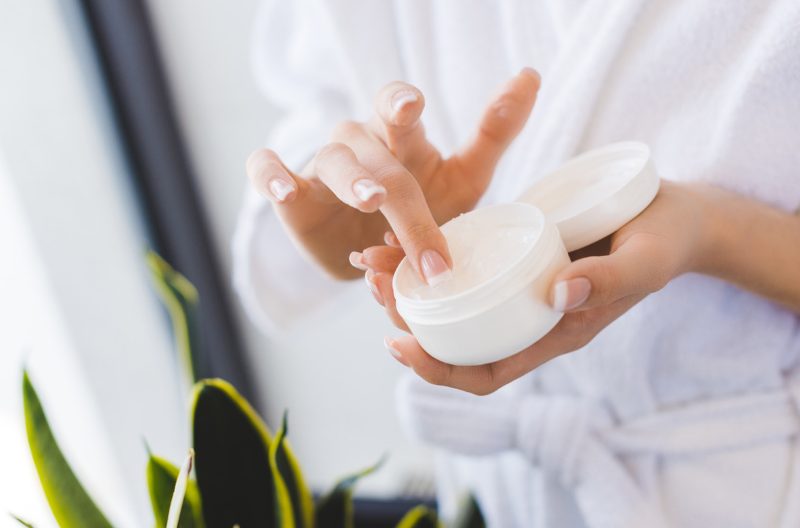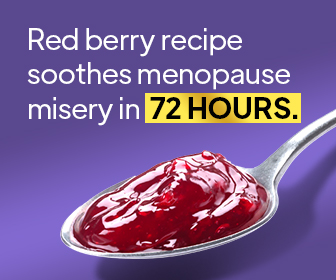Pollution is a concern all over the world.[1] With today’s hectic and fast-paced lifestyle, pollution has begun to increase beyond all our previous estimates, making it the world’s largest environmental risk factor to good health.[2] Consequently, pollution creeps into our bodies through our skin.[3] So, what is the best skin care routine to prevent it?
The skin care industry has just started to explore this new frontier. After all, the skin is the largest organ of the human body. Anything that affects the skin impacts the entire body.[4] As a result, in just the past two years, skin care manufacturers have introduced dozens of new formulas targeting pollution and its damaging effects. These new products aim to provide the best skin care routine for hydrated, healthy skin.
Let’s explore a little bit about what modern-day pollution is, the types of pollution that affect our skin the most, and the best skin care routine and organic skin care products to use to prevent damage from pollution.
How Does Pollution Affect Your Skin
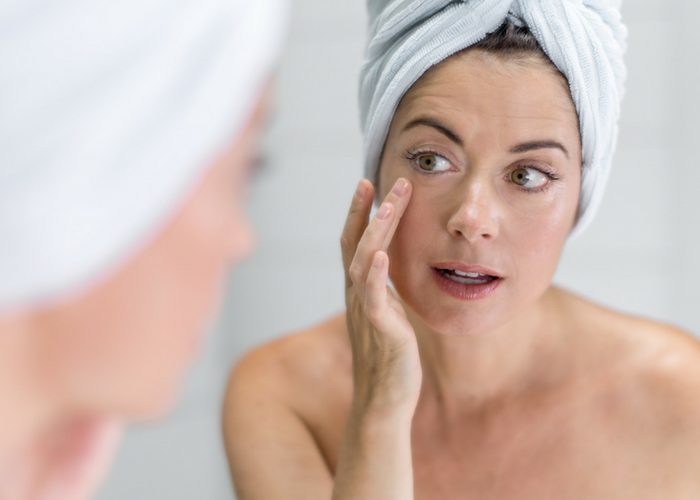
Our skin acts as a protective barrier against pollutants and chemicals in the air. Pollution can harm the skin by entering the skin barrier and causing the skin cells to oxidate. For instance, when you think of oxidation, think of iron rusting, or bronze that turns green. Or, in terms of our skin, when we apply makeup that changes shades after it settles into the skin. That is oxidation.
So, when pollution enters our skin barrier, it oxidates our cells and causes premature aging, irritation, or damage. To make matters worse, scientists are just now discovering that pollution particles — both indoor and outdoor pollution — is actually smaller than the size of our pores.[5] Therefore, this nano-sized pollution penetrates our pores and then oxidates, and causes our skin to age prematurely![6]
So, as pollution is evolving while simultaneously shrinking in size, its ability to break down our protective skin barrier is now greater than ever. Hence, having the best skin care routine to build your skin barrier is important for protection from pollution. In the next section, we’ll look at the types of pollution that are particularly harmful to your skin.
5 Most Harmful Types of Pollution for Skin
Pollution has always had an impact on the environment. But it is only within the last few years that we’ve realized the direct effect that pollution has on our bodies. Below is a short list of the most harmful types of pollution for skin.
Traffic Emissions
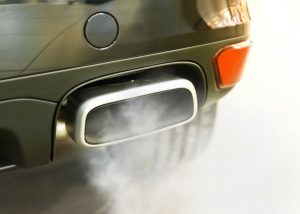
Recent studies show that the type of pollution that causes some of the most harmful effects to our skin comes from traffic emissions.[7] Micro-particulate sized toxins from carbon emissions were shown to carry chemicals and metals into the skin. As a result, these micro-pollutants from traffic actually caused 20% more pigmentation spots on the faces of test subjects.[8]
UVA/UVB Rays

Ultraviolet (UVA/UVB) rays from the sun are also incredibly damaging to our skin. A study published in the International Journal of Molecular Sciences stated that “excessive exposure to UV carries profound health risks, including atrophy, pigmentation changes, wrinkling, and malignancy”.[9] It is the primary cause of the most common types of skin cancer that affects more than a million Americans annually. Thus, if you don’t already have some form of SPF sunscreen in your skin care regimen, now is the time to start thinking about it.
Smog
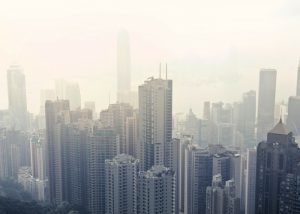
Ozone (O3) typically refers to the stratosphere. However, there is also ground-level ozone. Ground-level ozone is created when direct sunlight hits pollutants emitted by cars, power plants, refineries, and other sources. As a result, it chemically reacts to create smog.[10] Consequently, smog particles deplete antioxidants in the skin which results in premature aging. It has also been proven to cause inflammation. Inflammation can exacerbate skin sensitivities, like rosacea, eczema, or acne.[11]
HEV

A new addition to the realm of modern pollution is computer technology. High-Energy Visible Light (known as HEV or blue light) is emitted from our personal computer technology. This includes computers, tablets, and cell phones. HEV causes skin inflammation, inhibits our skin cells’ capacity to renew themselves, and causes “digital aging”,[12] which is premature aging caused by our digital devices.
Second-hand smoke

An oldie but baddie, right? Second-hand smoke has recently gained status as a pollutant in its own right. It has been shown to damage healthy skin. According to one study, second-hand smoke impairs the skin’s ability to produce collagen. That is the stuff that keeps our skin plump and protects our moisture barrier.[13] Continued exposure to second-hand smoke can cause premature skin aging which leaves you susceptible to more pollutants. So be warned!
To sum up, it is clear that pollution is a very serious issue on many levels — and our skin is no exception. With fine lines, hyper-pigmentation, inflammation, and even skin cancer as consequences, it is clear that protecting our skin is necessary as a means of protecting our overall health.
Common Signs of Skin Toxicity
Our skin barrier filters out toxins from within. It also keeps out pollution that can enter our bodies through our skin. So, our skin will react to pollution when it tries to break down our skin’s protective barrier. The list below contains common problems that can happen when our skin is purging pollution, or when our skin barrier is out-of-balance and isn’t functioning properly.[14]
1. Dehydration
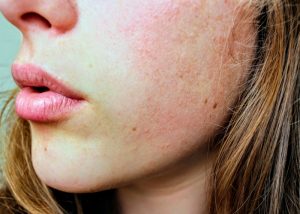
One of the primary ways that we see pollution take its toll on our skin is through dehydration. Sun, HEV, and second-hand smoke can all cause your skin to dehydrate. As a result, if your skin sometimes feels dry, itchy, or scaly, it is probably dehydrated.[15] Preserving the skin’s moisture barrier is very helpful in reducing dehydration, and it goes a long way towards reducing premature aging and restoring our skin barrier.
2. Acne
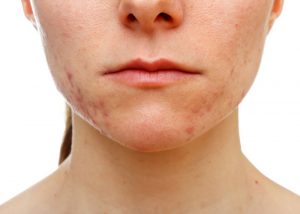
Acne occurs when our pores are clogged. Ultimately, ozone and air pollution in the atmosphere can clog pores and thus cause blemishes, acne, irritation, and sensitivity.[16] Thus, if you have noticed bumps, whiteheads, blackheads, or cystic irritations, these could be signs that your skin is being affected by pollution. Consider additional precautions if you have oily skin. Air pollutants are actually more attracted to the oil on your skin and cause your skin to absorb more pollution![17]
3. Dullness
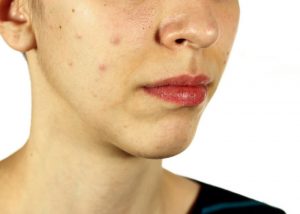
Dullness is the silent creeper! How can you tell if your skin is dull? Well, here’s the key. Your skin looks dry and has a dark or gray cast. It looks washed out. It may even appear dirty! Repeated or prolonged exposure to smog, traffic emissions, and HEV can make your skin look dull. Your best skin care routine will include ways to combat dullness. Restoring moisture and balancing skin tone will rejuvenate your skin’s balance and barrier and help restore its glow.
4. Inflammation and Sensitivity
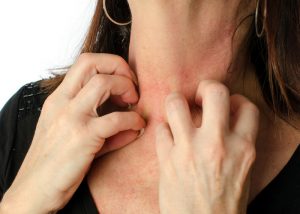
These days, it’s hard to tell what causes our skin to be sensitive. However, ozone and smog have been associated with skin conditions like rosacea, psoriasis, dermatitis and other skin sensitivities, which can be exacerbated by pollution.[18]
As a result, increased sensitivity is a very painful reminder that pollution is attacking our skin barrier. It may be difficult to find the best skin care routine that includes benefits for those suffering from certain skin conditions. As such, we should take note and review some of the new skin care on the market to improve our skin care routine.
5. Hyper-pigmentation
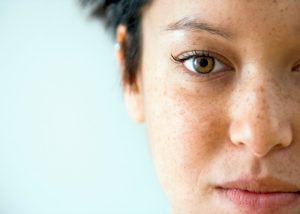
Dark spots, age spots, wine spots, freckles, and moles are all spots that present themselves on our skin over time. Scientists have found that there is a link between traffic emissions and dark spots on the skin. Also, pollution from traffic particulates increases hyper-pigmentation by 25%![19]
6. Fine Lines
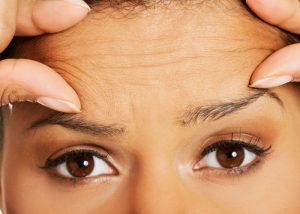
We all get fine lines as we age. Although fine lines occur normally, pollution creates them prematurely. For example, the sun’s harsh UVA/UVB rays cause grave damage to the skin. This can cause not only fine lines, but also painful sunburns. Also, it can cause permanent sun damage, hyper-pigmentation, and melanoma, a deadly form of skin cancer.[20]
In all, though this information may seem daunting, there is some good news. If pollution can enter the skin through micro-particles and damage our skin, then skin care products can also enter the skin to protect it! So, what’s the best skin care routine for your skin? Continue reading to find the right products for your skin type and condition. Let’s build that skin barrier!
What is Barrier Cream and How Does It Work?
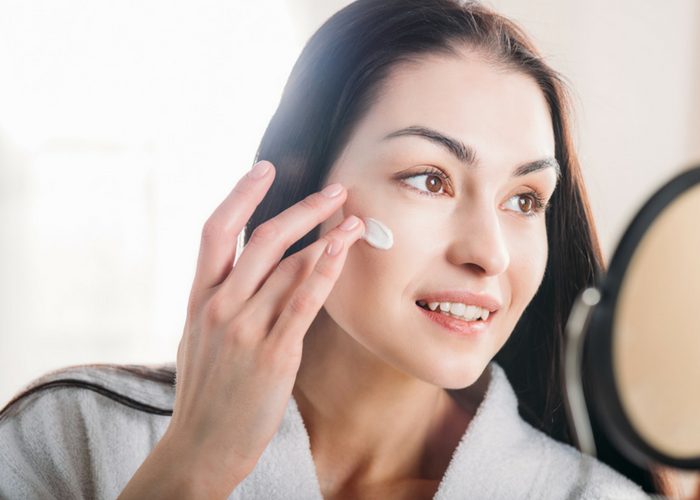
The skin is the largest organ in the body, and it serves two major functions: to filter out toxins from within and to serve as a barrier to keep toxins out. Because of this, keeping the skin barrier healthy is the first line of defense to preventing pollution from entering our bodies.
Your skin repairs itself while you sleep.[21] As a result, nighttime is when your skin cells renew themselves.[22] However, if the skin is damaged, it cannot regenerate. Therefore, it cannot function normally as a protective barrier against pollution. Thus, pollution causes damage that is sometimes irreparable.
The best defense to pollution attacking your skin is prevention. Thankfully, the skin care industry has provided us with new science to heal our modern woes. Barrier creams provide a barrier between pollution and our skin. It helps keep out contaminants that may irritate or harm the skin. Some examples of barrier creams are Vaseline, mineral makeup, or shielding lotions.
If you’re thinking about giving your skin barrier a boost, barrier creams could be a smart addition to creating your best skin care routine.
The Best Organic Skin Care Products to Protect Against Pollution
Although pollution is everywhere, we have the tools to win the war! So, don’t get too stressed out or confused. If pollution micro-particles can penetrate your skin’s protective barrier, then so can the following ingredients to prevent the damage it causes. Additionally, these ingredients are all very easy to add to your daily skin care regimen, and can be found in a number of organic skin care products.
Antioxidants
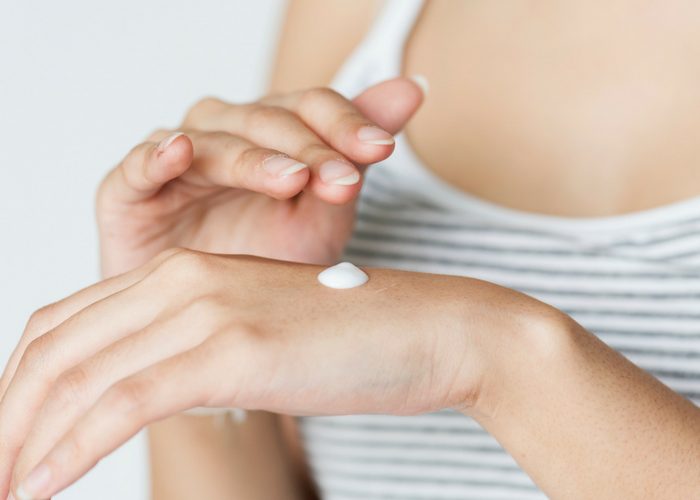
- Helps protect against: free radicals, destruction of skin cells
- Helps promote: cell renewal
- Where to find antioxidants: cleansers, toners, serums, day or night creams, masks
Antioxidants are not a new thing. In fact, we have been hearing about them in superfoods for at least a decade. But now, we can start including them as part of our skin care regimen, too.
Antioxidants neutralize free radicals in the skin’s cells and prevent the breakdown of collagen.[23] Thus, antioxidants help repair damage and protect the skin against future damage. Ultimately, antioxidants restore the proper functioning of the skin barrier.[24]
Antioxidants are really just vitamins. And, the most helpful vitamins to boost your skin’s renewal processes are vitamins C and E. Each of these vitamins helps to tighten skin and reduce the appearance of scars.
But, used together for the best skin care routine, these two vitamins hydrate your skin and neutralize environmental aggressors that may be trying to attack it. Furthermore, antioxidants are great for all skin types!
Niacinamide
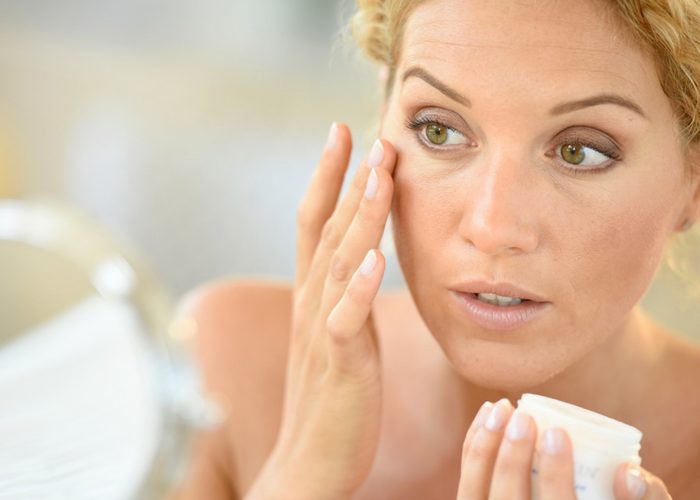
- Helps protect against: destruction of skin barrier, premature aging
- Helps promote: collagen production, hydration
- Where to find niacinamides: gentle cleansers, day or night creams
Niacinamide is a B-vitamin that boosts the barrier function by producing ceramides.[25] Ceramides occur naturally in the skin within the protective barrier to prevent water loss.[26]
Notably, niacinamide is proven to penetrate the skin and to decrease the signs of aging.[27] Niacinamide also boosts the production of collagen in the skin.[28]
Niacinimide can be added to create the best skin care routine for your skin type, especially if you have dry to normal skin, or combination skin. In addition, aging skin will also benefit from adding niacinimide to your skin care regimen.
Green Tea Extract
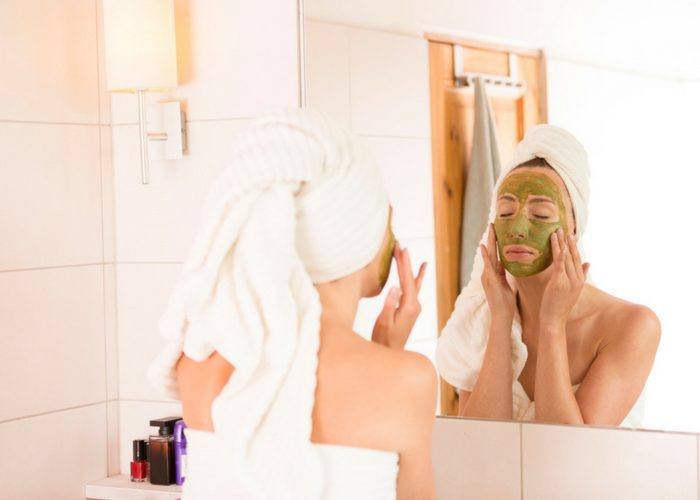
- Helps protect against: toxins, inflammation, free radicals
- Helps promote: cell renewal, hydration
- Where to find green tea extract: cleansers, toners, serums, treatments, day or night creams, masks
Green tea extract is a powerhouse and should be included in your best skin care routine. Studies have proven that green tea extract protects the skin from pollution.
Moreover, green tea extract is antimicrobial, anti-inflammatory, anticancer, antioxidant and combats free radicals.[29] It is proven to permeate the skin barrier and regenerate the skin from within.[30] Additionally, green tea extract has been proven to plump up collagen production by 18%-40%.[31] How’s that for multitasking?
Green tea extract should be added to the best skin care routine for every skin type, but it is especially beneficial for oily and sensitive skin types. If you’re wondering where to find skincare products with green tea extract, you’ll find that it is a common ingredient in organic skincare products.
Retinol
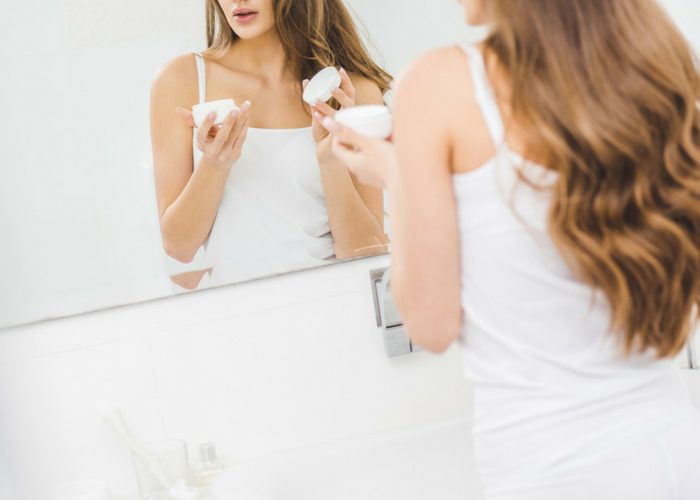
- Helps protect against: sun damage, premature aging
- Helps promote: collagen production, hydration
- Where to find retinol: treatments, day or night creams
Some of retinol’s biggest fans claim that it can reverse sun damage and the signs of aging.[32] A form of vitamin A, retinol triggers the skin’s creation of new collagens.[33] As a result, the skin appears plumper, more hydrated, and more youthful. This should absolutely be included in all the best skin care routines.
A word to the wise: retinol is different to retin-A, only in its potency. Retinol is available over-the-counter, while retin-A requires a prescription.
Retinol can be added to all skin care regimens, but especially aging or damaged skin types.
Alpha Hydroxy Acids
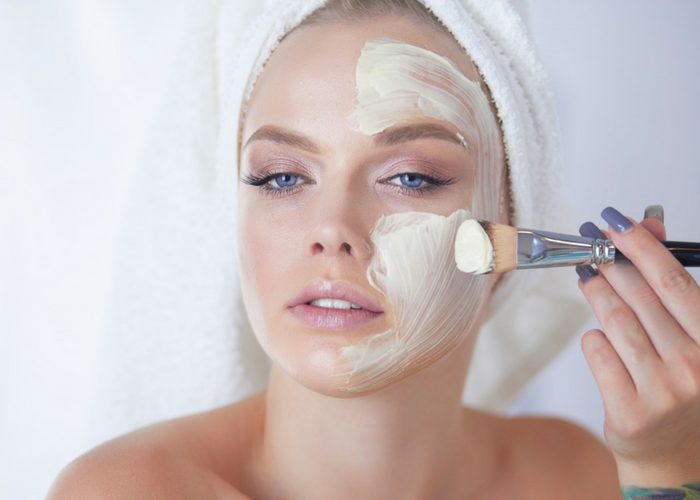
- Helps protect against: toxic buildup, dry skin, dehydration, dullness
- Helps promote: hydration
- Where to find AHAs: exfoliating cleansers, peels, toners, treatments, masks
Don’t be scared of using these acids on your skin! Alpha Hydroxy Acids (AHAs) are not just one type of acid, but many. Two of the most commonly used AHAs in the best skin care routines are glycolic acid and lactic acid. AHAs are suitable for every skin type.
Essentially, AHAs exfoliate the skin and remove dead skin cells from the surface all while moisturizing the top layers of the skin.[34] What’s more, when used in your daily skin care routine, they improve the skin’s barrier function and its resistance to dehydration.[35]
Salicylic Acids
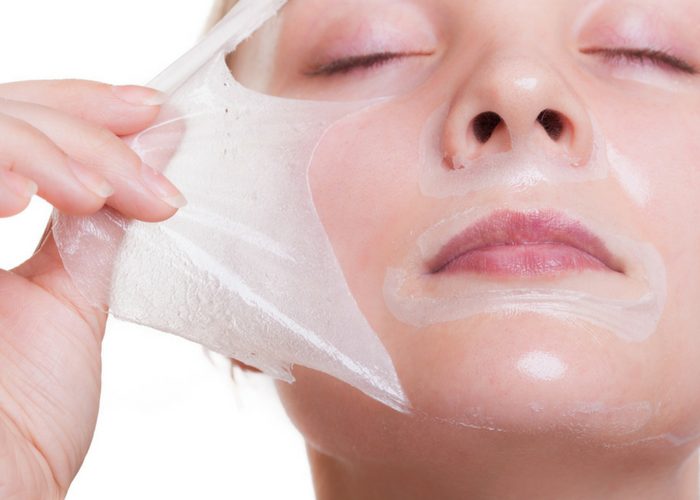
- Helps protect against: oil buildup, toxins, dehydration, dullness
- Helps promote: cell renewal
- Where to find salicylic acid: cleansers, exfoliating cleansers, peels, masks
Salicylic acid is best used by those with oily skin. First, it exfoliates dry, dead skin cells. Then, it cleans and polishes deep inside the pore.[36] Thus, salicylic acid leaves the skin glowing and clean.
In addition, salicylic acid stimulates cell turnover.[37] It removes the pollutants that get stuck in the oil and dead cells on the surface of the skin and cleanses deep within. So, a weekly peel with a product containing salicylic acid is a must in your best skin care routine.
Salicylic acid is particularly beneficial for those with oily or acne-prone skin.
Activated Charcoal
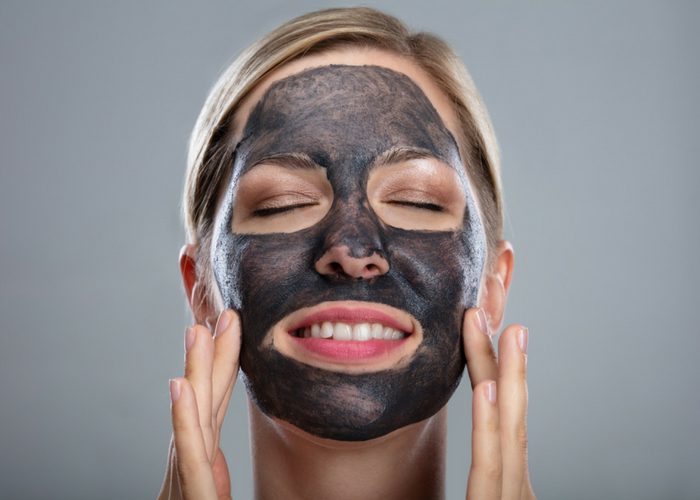
- Helps protect against: toxins, clogged pores, dullness
- Helps promote: cell renewal
- Where to find activated charcoal: cleansers, exfoliators
Activated charcoal is found in cleansers and masks. It is a magnet for impurities like pollution that clogs pores. In particular, it can eliminate thousands of times its own weight in free radicals like bacteria and pollution.[38] Activated charcoal works by attaching itself to those bacteria until they are disposed of during the skin’s regular renewal process.[39] Activated charcoal is a great product to add to your best skin care routine.
A weekly mask or a daily cleanser that contains activated charcoal is great for all skin types (including sensitive skin) to eliminate the buildup of pollution in your skin’s cells.
Finally, while some of the ingredients mentioned above are new, they are not hard to find. The skin care market is filled with products that you can use to practice the best skin care routine.
Try These Advanced Skin Care Tips for the Best Skin Care Routine
The best skin care routine starts on a very basic level – cleanse, tone, moisturize, and apply sunscreen daily. The following advanced skin care tips will help you up your level of skin protection.
- Find a great cleanser. A really great cleanser not only removes dirt and grime from your skin, it also contains active ingredients that help fight and protect you against pollution. Look out for ingredients such as niacinamide, green tea extract, or activated charcoal.
- Toners that include green tea extract, AHAs, or antioxidants will give you an additional boost to your skin barrier.
- Having a good serum is an essential part of your best skin care routine. Many brands make treatment serums that provide the highest vitamin content allowed by law. These oils impart antioxidants and can even erase acne scars or hyper-pigmentation. Look for vitamin C, retinol, or rose hip as active ingredients.
- Use a moisturizer that contains green tea extract, retinol, niacinamides, or antioxidants.
- Always use a sunscreen with an SPF 50 and PA++++, if possible. The SPF protects you from the sun’s UVB rays, while the PA++++ protects you from UVA rays. Mineral sunscreens work great as a physical barrier against toxins. And, of course, there are also lightweight chemical sunscreens that offer the same protection with a different feel on your skin.
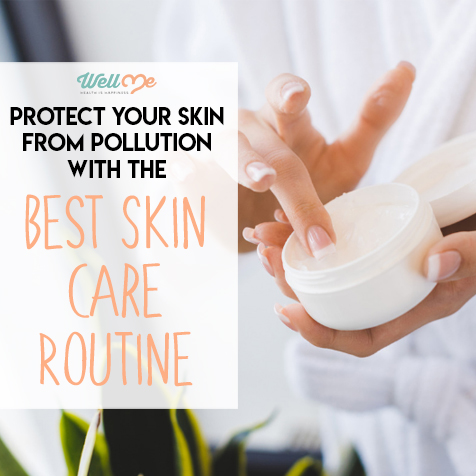
Conclusion
Pollution can’t really be avoided, so we must do what we can to protect ourselves from it. Using these tips will ensure you have the best skin care routine to defend your skin. Take care of your skin, and your skin will take care of you!
References
- [1] https://onlinelibrary.wiley.com/doi/epdf/10.1111/exd.13257
- [2] https://onlinelibrary.wiley.com/doi/epdf/10.1111/exd.13257
- [3] http://www.ijdvl.com/text.asp?2017/83/4/415/199579
- [4] http://www.ijdvl.com/text.asp?2017/83/4/415/199579
- [5] IJDVL. http://www.ijdvl.com/text.asp?2017/83/4/415/199579
- [6] http://www.ijdvl.com/text.asp?2017/83/4/415/199579
- [7] http://www.ijdvl.com/text.asp?2017/83/4/415/199579
- [8] http://www.ijdvl.com/text.asp?2017/83/4/415/199579
- [9] NCBI. https://www.ncbi.nlm.nih.gov/pmc/articles/PMC3709783/
- [10] https://www.epa.gov/ozone-pollution/basic-information-about-ozone
- [11] https://www.frontiersin.org/articles/10.3389/fenvs.2014.00011/full
- [12] CEN. https://cen.acs.org/business/consumer-products/Cosmetics-take-stresses-modern-life/96/i20
- [13] https://www.sciencedirect.com/science/article/pii/S0006291X1402052X?via%3Dihub
- [14] https://www.ncbi.nlm.nih.gov/pmc/articles/PMC5796020/
- [15] Mayo Clinic. https://www.mayoclinic.org/diseases-conditions/dry-skin/symptoms-causes/syc-20353885
- [16] IJDVL. http://www.ijdvl.com/text.asp?2017/83/4/415/199579
- [17] https://onlinelibrary.wiley.com/doi/full/10.1111/ics.12378
- [18] https://www.frontiersin.org/articles/10.3389/fenvs.2014.00011/full
- [19] https://www.elsevier.com/about/press-releases/research-and-journals/new-study-links-traffic-related-air-pollution-to-facial-dark-spots
- [20] WebMD. https://www.webmd.com/beauty/sun-exposure-skin-cancer#1
- [21] Mikhail Geyfman, Bogi Andersen. https://www.sciencedirect.com/science/article/pii/S0022202X15343414
- [22] https://www.sciencedirect.com/science/article/pii/S0022202X15343414
- [23] https://www.healthline.com/nutrition/antioxidants-explained
- [24] NCBI. https://www.ncbi.nlm.nih.gov/pmc/articles/PMC5796020/
- [25] https://www.ncbi.nlm.nih.gov/pmc/articles/PMC2921764/
- [26] https://www.ncbi.nlm.nih.gov/pubmed/12553851
- [27] NCBI. https://www.ncbi.nlm.nih.gov/pmc/articles/PMC2921764/
- [28] https://www.researchgate.net/publication/286270242_A_Review_of_the_range_of_effects_of_niacinamide_in_human_skin
- [29] https://www.mdpi.com/2079-9284/5/1/19/htm
- [30] MDPI. https://www.mdpi.com/2079-9284/5/1/19/htm
- [31] https://www.mdpi.com/2079-9284/5/1/19/htm
- [32] https://www.ncbi.nlm.nih.gov/pmc/articles/PMC3266803/
- [33] NCBI. https://www.ncbi.nlm.nih.gov/pmc/articles/PMC2699641/
- [34] https://www.ncbi.nlm.nih.gov/pmc/articles/PMC3941867/
- [35] https://www.ncbi.nlm.nih.gov/pmc/articles/PMC3941867/
- [36] NCBI. https://www.ncbi.nlm.nih.gov/pmc/articles/PMC3941867/
- [37] https://www.ncbi.nlm.nih.gov/pmc/articles/PMC3941867/
- [38] https://www.mdpi.com/2079-9284/4/4/57/htm
- [39] MDPI. https://www.mdpi.com/2079-9284/4/4/57/htm

